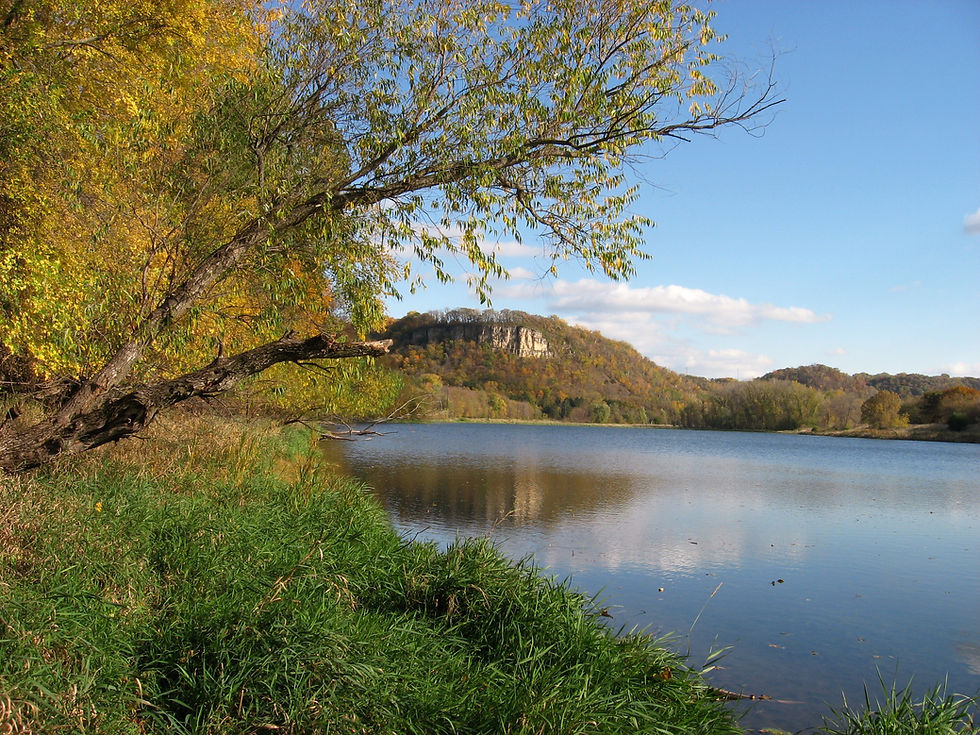Wacouta Prairie Comes To Life
- wacoutanaturenotes
- Aug 4, 2020
- 2 min read

Hatching Photo courtesy of Dave McDougall
Just a few days after the first clutch of bluebirds featured in my last post fledged from our backyard nesting box, a second nest was built. After five eggs were visible, incubation started that lasted until July 18th.

Nestlings at One Week of Age
Two weeks later on August 1st, the second clutch fledged.

Partridge Pea
With the leadership and hard work of Diane Mueller, Mary Franta and their interns, the Wacouta Prairie is coming alive with a variety of amazing colors. Partridge Pea is an annual with yellow flowers that attract bees and butterflies. The seed pods are eaten by both songbirds and gamebirds.
In addition, these wildflowers provide excellent cover for gamebirds and browse for deer. If you touch the leaves, they collapse giving rise to the common name "sensitive plant."

Black-eyed Susan and Prairie Sage
In isolated areas along the trail, you will find Black-eyed Susan and Prairie Sage. This species of sage was used in sage bundles for smudging and ceremonial purposes by several Native American tribes.

Grey-Headed Coneflower
The Gray-Headed Coneflower is a prairie perennial. The flower heads have beautiful drooping yellow rays that provide an impressive sight with Rattlesnake Bluff in the background.

Tree Swallows
Tree swallows live primarily on a diet of insects and feed from dawn to dusk in areas full of flying insects. Seldom will they feed any higher than 40 feet off the ground and if insects are plentiful, large numbers of swallows can be observed.
Tree swallows are cavity nesters using standing dead trees, old woodpecker cavities and artificial nesting boxes. In open prairies, nesting boxes put up for bluebirds are frequently used by tree swallows.

Tree Swallow
We have lived in Wacouta for 50 years and have an excellent view of the field now being restored to a prairie. Over these 50 years, this field has been either corn, soybeans or winter rye.
During this entire time, we have never observed what we have seen this July. During the sunny warm middle part of the day, large swarms of tree swallows have been circling over the prairie feeding on insects. Now that this area is not being treated with deadly herbicides, the insects are making a remarkable comeback.
Research done at the University of Saskatchewan has found tree swallow reproduction is greatly impacted near areas of intensive agriculture. In recent years, it has been determined that birds feeding on insects have had the greatest decline in numbers.

Widow Skimmer Dragonfly
One day out of curiosity, I walked out into the prairie to try and determine what insects the swallows were consuming. The most visible and common were the widow skimmer dragonflies. The nymphs of these insects live in the water of nearby ponds, lakes and creeks.
They molt and grow in the substrate of these waters until they are ready to emerge. Interestingly, these predatory insects prey upon other insects including mosquitoes.

Cooper's Hawk
During this past winter and spring, we have observed an adult Cooper's hawk in our immediate neighborhood keeping watch over the bird feeders. Common birds falling victim to these fast flying accipiters are starlings, mourning doves and robins.
On two different occasions, I observed a Cooper's hawk chasing tree swallows out over the prairie. This photo was taken last winter as an unappreciated starling fell victim to this fast flying raptor.




Comments